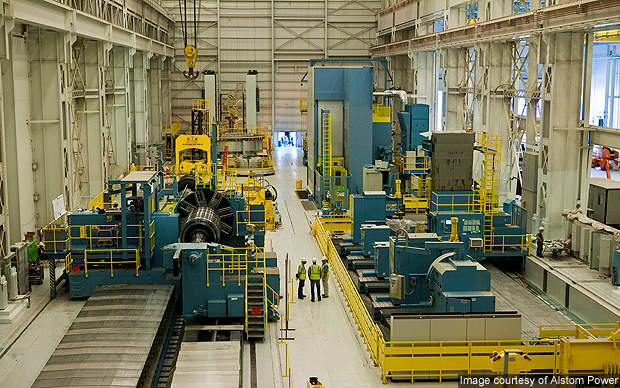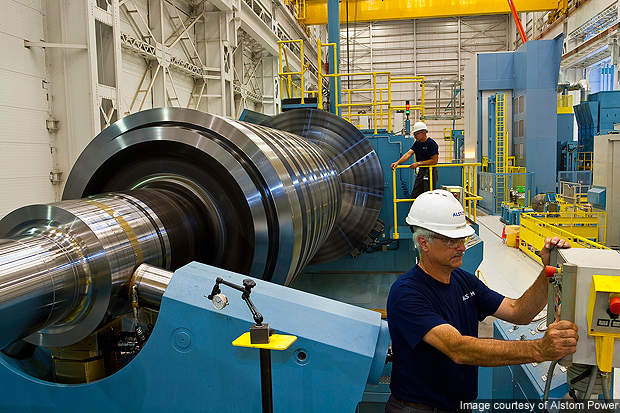French engineering company Alstom opened its new turbine manufacturing facility at Chattanooga, Tennessee on 24 June 2010. It is the world’s largest rotor balancing facility and will manufacture the world’s largest steam and gas turbines, turbo generators and components for the North American nuclear market. The new factory also provides retrofitting for existing facilities.
The Chattanooga facility will manufacture the world’s largest nuclear steam turbine, Arabelle. This is a versatile turbine that can be matched with any reactor, either pressurised or boiling water reactor. The turbine has a yield capacity of 1,700-1,800MW and is 2% more efficient than conventional steam turbines.
Alstom chose Chattanooga as an ideal place for the new facility as it is centrally located and has excellent road and rail infrastructure in addition to waterways. The first complete turbine was shipped from the facility in August 2011.
The facility was developed with an investment of $300m. The plant currently employs more than 200 people and is gradually placing 350 employees at the Chattanooga plant by 2013.
A further investment of $2.15m was made to create a river walk on the Tennessee River for the employees, construction of which was completed in September 2011.
Plant make-up
The plant occupies an area of 360,000ft² and features the world’s largest rotor balancing facility, horizontal lathe and a barge dock with a crane that can lift up to 1,000t of equipment.
The rotor balancing tunnel is a 600m long underground tunnel. Rotors measuring 22m long and 8m in diameter are tested in the tunnel. The tunnel will be closed to create a vacuum to rotate the turbines at a speed of 4,500 revolutions per minute.
The plant meets the requirements of the Leadership in Energy and Environmental Design (LEED) Goals certification.
LEED certification is a benchmark set for the high performance green buildings in the US.
Technology
Alstom’s nuclear power solution is based on Arabelle steam turbine technology.
The Arabelle steam turbine weighs 120t and can generate between 900ME to 1,800MW of power on a 13-wheel rotor.
It is shorter and lighter than the conventional steam generators. The low pressure (LP) inner casing is independent of the LP exhaust hood. It is connected with annular rubber joints allowing it to be assembled independent of the condenser.
The moisture separator reheaters (MSR) are positioned between high pressure (HP) and LP steam expansions. They reduce the number of reheat valves required. The MSR is located on either side of the LP casings and helps in easy maintenance of the turbines.
The LP and intermediate pressure (IP) connecting ducts are under the pedestal.
This provides easy access to LP modules, avoiding the need to dismantle the ducts to open the casings. This can reduce erection and maintenance time by 15-20%.
US nuclear power market
The US is now planning to build seventeen new nuclear power plants, a calculated move taken after the Three Mile Island accident in 1979. Four units have been built so far. The existing nuclear reactors in the US are aging as 70% of them are more than 30 years old. Alstom will help in refurbishing the existing steam turbines and extend their licenses for an additional 15-20 years using the Chattanooga plant. The new facility will enable the company to cater to 80% of the nuclear plants present in the country.
There has been a rise in turbine retrofitting in recent years due to stricter green house gas emission standards adopted to slow down the process of global warming. The rise in retrofitting is also due to the difficulties in acquiring land to construct the facilities on. Another reason for the rise is that the cost of upgrading a nuclear plant is much lower than building a new one.






